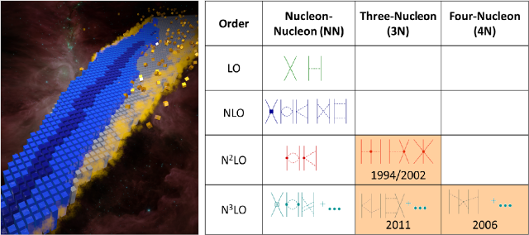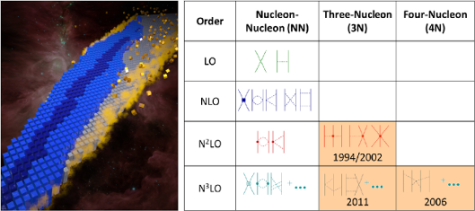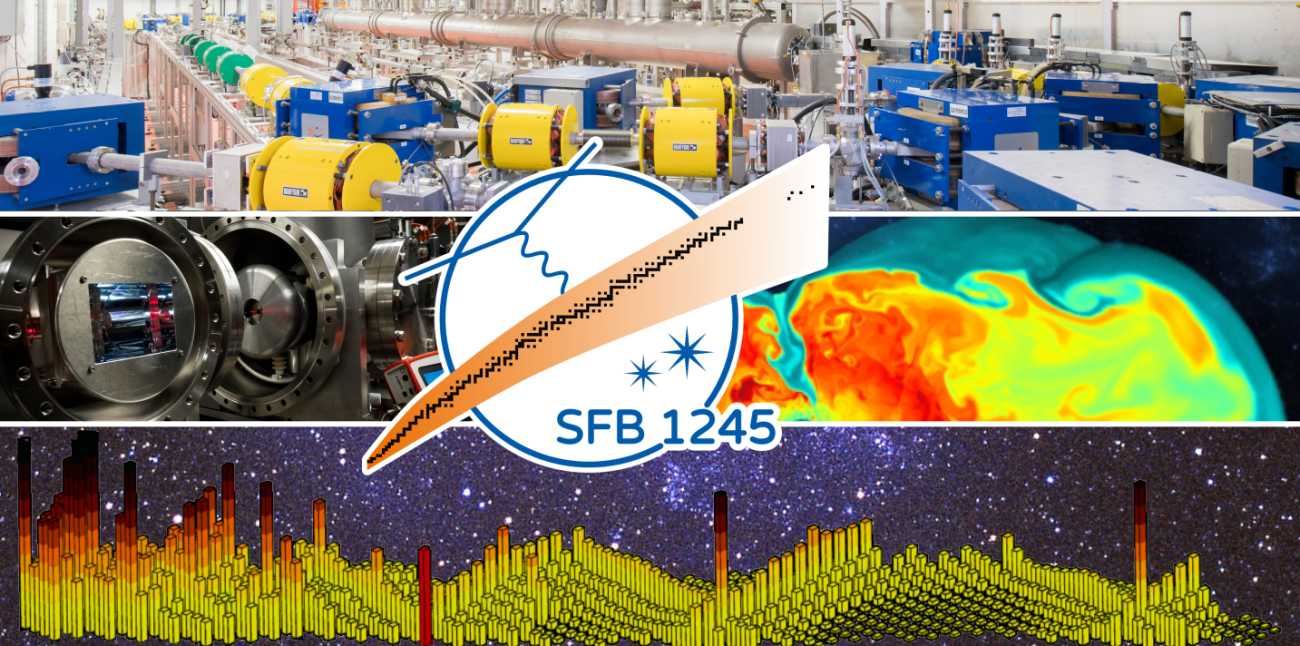

[1] J. Erler, N. Birge, M. Kortelainen, W. Nazarewicz, W. Olsen, A.M. Perhac, and M. Stoitsov, The limits of the nuclear landscape, Nature 468, 509 (2012).
Institute for Nuclear Physics
Nuclear structure theory has evolved into a field with a systematic theoretical foundation, with nuclear forces based on QCD and advanced methods to solve the nuclear many-body problem with controlled uncertainties. Effective field theories (EFT), first proposed in the pioneering work by Steven Weinberg, have played a guiding role in this process, as they reduce the complexity of the underlying QCD theory to the relevant degrees of freedom in a systematic way. While this was first demonstrated for light nuclei, we have shown in the first funding period that this approach can be successfully extended to medium-mass and heavy nuclei. Research performed in this direction has the ultimate goal to understand the nuclear chart from first principles. Since the properties of nuclei, their existence, excitations and decays are all encoded in the nuclear chart, it represents the boundary condition for the complete evolution of known matter from the Big Bang to today.

[1] J. Erler, N. Birge, M. Kortelainen, W. Nazarewicz, W. Olsen, A.M. Perhac, and M. Stoitsov, The limits of the nuclear landscape, Nature 468, 509 (2012).

